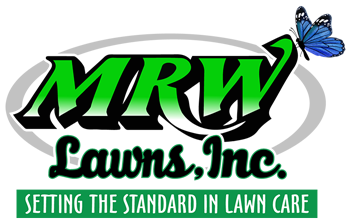Be sure to follow these instructions to get the best results from your Core Aeration.
Watering Instructions
You can continue with your normal watering schedule as you have done through the summer. If you do not water regularly, now would be a good time to start. Even a moderate amount of watering will encourage your new seed to germinate and fill in.
When watering, check to make sure water is getting to all areas of your lawn. Regardless of the type of watering system you use, many sprinklers easily miss corners and edges and these areas are particularly vulnerable to drying out faster than the center portion of your lawn. Also, areas near buildings dry out faster because of reflected heat. For these reasons, these areas will require special attention from you when watering. Water them by hand if necessary.
Runoff may occur on some soils and sloped areas before the soil has been adequately moistened. To conserve water, prevent erosion, and insure adequate soak-in, turn off the water when runoff begins to occur. Wait 30 minutes to an hour, and then restart the watering on that area. Repeat this process, as necessary, until the soil is adequately moistened.
Most lawns will do well with 1 inch of water per week. This can be applied by watering 2 to 3 times a week, depending on natural precipitation. Deep watering is needed so that the underlying soil stays wet 3-4 inches down. Infrequent and deep watering will encourage the grass plants to establish their roots deeper in the soil. Deeply rooted grasses are better able to survive heat and drought stress because it has the ability to tap into subsurface moisture. During the rest of the growing season, deep and infrequent watering will replenish the “soil water bank” your new turf will need to survive. Refer to our information sheet, “The Key to a Beautiful Lawn is a Customer Who Cares”, for more information on maintenance after establishment.
Mowing
Cool season grasses (the type we planted in your lawn today) should be mowed at 3-3½ inches. Warm season grass, like Zoysia, should be mowed at 2 inches. Use a ruler to measure the height, as mower settings vary greatly and do not always reflect actual height of the grass in inches. Mowing new turf too close can cause stress, especially during warm fall days.
The most important rule of thumb to remember when mowing is to mow often enough so as never to remove more than one third (1/3) of the leaf area of the grass. For example, if you are mowing your tall fescue lawn at 3 inches, than you should mow before the lawn grows any taller than 4 ½ inches. Maintain a sharp mower blade. A dull blade can cause drought stress and disease problems. If you mow regularly, it is beneficial to leave the clippings down. Clippings will decompose and supply free fertilizer in the process. Only remove clippings if your lawn has grown excessively high or if your specialist has recommended doing so in your note.
Leaf Removal
When removing leaves, it is best to use a leaf blower rather than a rake. If a rake is all you have, use a flexible metal grass rake as opposed to a plastic grass rake. The metal rake is more flexible and will do less damage to the new seedlings as they develop. Wet leaves can be especially tough, so remove leaves on a regular basis before they start to damage your turf. Be careful when using blowers, as these can cause damage if not used properly. When removing limbs and twigs, it is best to pick these up by hand. The bottom line is, be aware of what you are doing to the turf.
If you still have questions or concerns, feel free to contact us via our contact form, or call our office at 301-870-3411.
